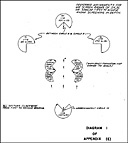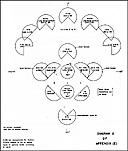| RM |
OP |
CIC |
OTC |
|
| |
|
|
|
DOCTRINE AND TACTICS (GENERAL) (Continued) |
| |
|
x |
x |
USF-75(A) "Current Tactical Orders and Doctrine, U.S. Fleet Aircraft;
Vol. 2: BB & Cruiser Aircraft" ComAirPac May 1943, C. |
| |
|
x |
x |
USF-76(Rev) "Current Tactical Orders and Doctrine, U.S. Fleet Aircraft;
Vol. 3: Patrol Aircraft" CominCh, February 1942. |
| |
|
x |
x |
USF-16 "Current Tactical Orders, Battleships" ComBatFor, 1938. |
| |
|
x |
x |
USF-17 "Current Doctrine, Battleships" ComBatFor, 1938, C. |
| |
|
x |
x |
USF-77(A) "Current Tactical Orders, Aircraft Carriers, U.S. Fleet ComAirPac,
1943, C. |
| |
|
|
x |
FTP-215 "Escort of Convoy Instructions, U.S. Fleet" 1943, CominCh, C. |
| |
|
x |
x |
USF-20 "Current Tactical Orders, Cruisers" CominCh, 1/41, C. |
| |
|
x |
x |
USF-21 "Current Doctrine, Cruisers," CominCh, 1/41, C. |
| |
|
x |
x |
USF-32(Rev) "Current Tactical Orders, Destroyers, 1940" ComDesBatFor, C. |
| |
|
x |
x |
USF-33(Rev) "Current Doctrine, Destroyers, 1940" ComDesPatFor, C. |
| |
|
x |
x |
FTP-146 "Scouting Manual, U.S. Navy" CNO, 1934, C. |
| |
|
x |
x |
FTP-219 "U.S. Fleet Anti-Submarine Instructions" 1943, CominCh, C. |
| |
|
x |
x |
USF-25(Rev) "Current Doctrine,
Submarines, 1939" ComSubFor, C. |
| |
|
|
x |
FTP-183/188 "General Tactical Instructions, U.S. Navy" 1940-42, CominCh, C. |
| |
|
|
x |
FTP-143 "War Instructions,
U.S. Navy, 1943" CNO, C. |


